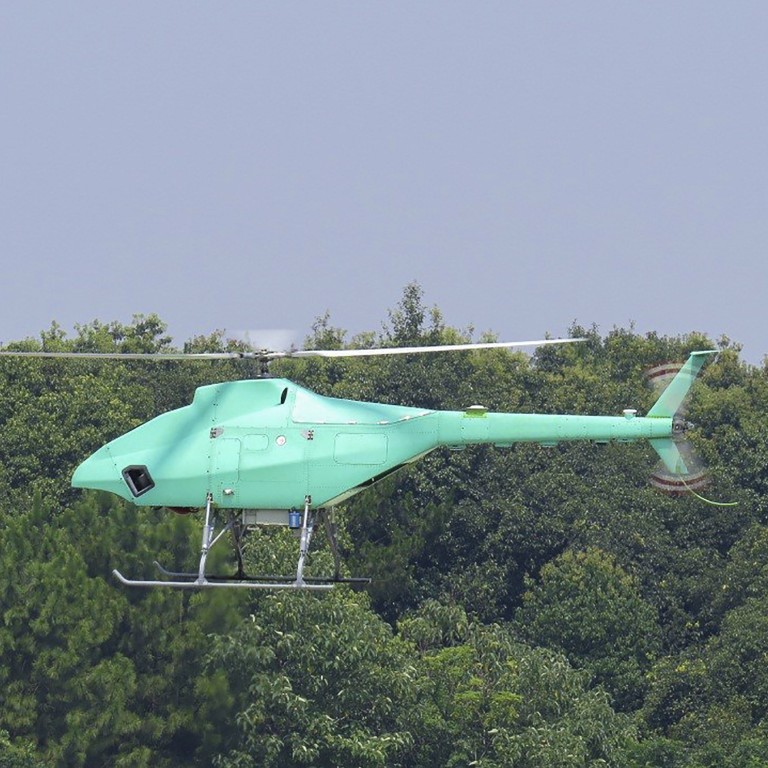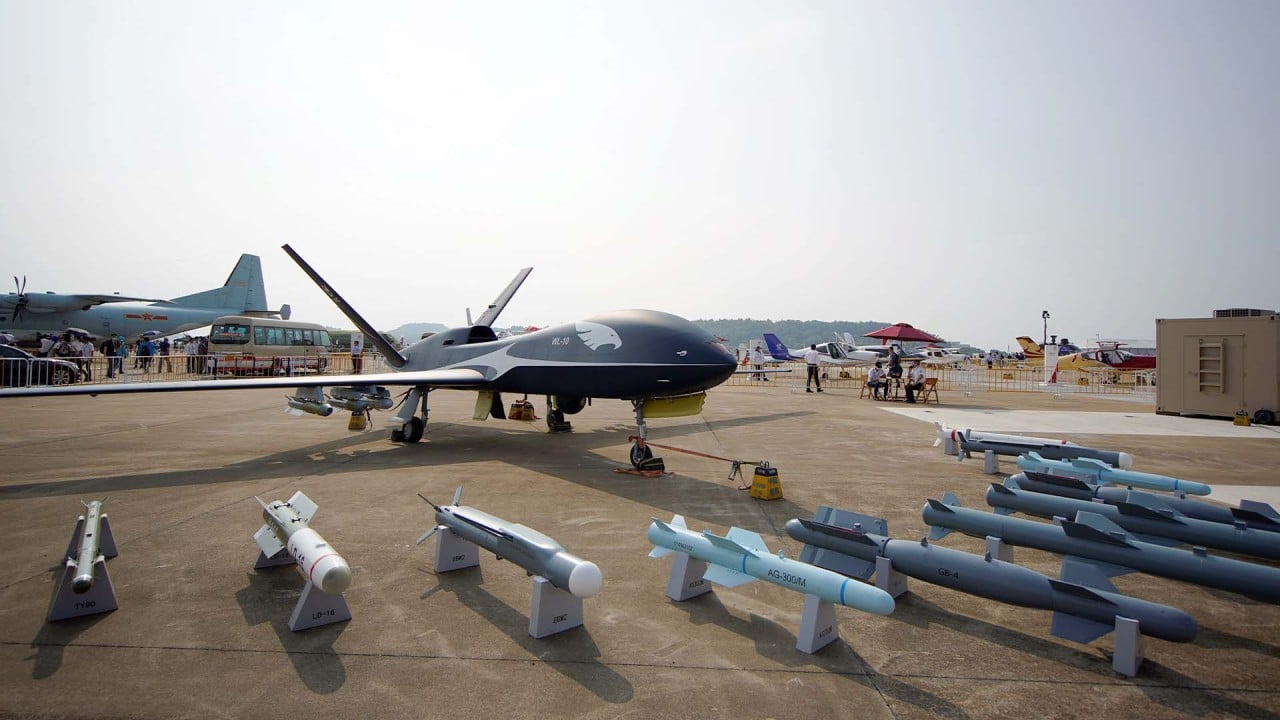
China’s drone force grows in number, strength and potential, pushing unmanned craft further into sky and sea
- The drone mother ship Zhu Hai Yun is just one of the recent advances in Beijing’s push for greater use of unmanned vessels
- A lightweight shipborne helicopter, a submarine drone that can fly and the military’s Robo-Shark broaden China’s network of tech options, says analyst
The latest unmanned vehicle to join China’s intelligence gathering network has had its maiden flight, according to state broadcaster CCTV.
During its maiden flight in China’s eastern Jiangxi province, the AR-500CJ performed manned take-off, landing and hovering, and landed smoothly. It will undergo functional and performance test flights and will have a technical appraisal in 2023.
Zhu Hai Yun is 88.5 metres long, 14 metres wide and 6.1 metres deep (290 feet long, 46 feet wide and 20 feet deep), with a designed displacement of 2,000 tonnes. It has a platform from which to launch unmanned military devices and can sail at a speed of 13 knots, with a top speed of 18 knots (21 mph) – similar to the speed of a container ship.
Similar to the Zhu Hai Yun, China’s first home-grown AI drone ship is characterised by its capabilities in stealth and far-sea operation and finished its first sea trial in waters near Zhejiang province in early June, Global Times reported at the time.
China’s DJI rebuffs Russian post calling its drones ‘symbol of modern warfare’
Last year, the Chinese military developed a marine drone named Robo-Shark that mimics a shark’s movement through the water.
Chinese state media said it was built to conduct “underwater close-in reconnaissance, search and rescue, battlefield surveillance, anti-submarine activity, hydrological surveys, communications relay and underwater tracking missions”.
The AR-500CJ and other unmanned systems highlighted the efforts and progress China was making in the development of unmanned systems, said James Bosbotinis, the book review editor for The Naval Review, the professional journal of the Royal Navy.
“Unmanned systems provide versatility and, through their diversity, a wide variety of options for employment,” Bosbotinis said. “Moreover, it could operate alongside manned platforms … in a manned-unmanned team.
“For China, in the maritime domain, unmanned systems can aid in the development of domain awareness, contribute to [from a military perspective], intelligence, surveillance and reconnaissance, as well as providing additional kinetic options.”
Bosbotinis said unmanned vehicles would be particularly valuable in submarine warfare, and that networking unmanned systems into a wider architecture – such as a distributed sensor network – would be even more helpful.
“The Zhu Hai Yun, in this regard, is particularly interesting as it could provide the basis for a hub in such a network,” he said, adding that unmanned systems could operate in those roles or areas that were more risky, thus reducing risks for manned assets.
China is leading the world in developing and manufacturing unmanned systems.



